I’ve always been fascinated by Olympic swimming and how it captures the spirit of competition and teamwork. The art of swimming at this level is not just about speed; it’s also about strategy, technique, and perseverance. This ultimate guide to Olympic swimming will give you insights into the sport, covering everything from its evolution to the rules and regulations that shape the events.
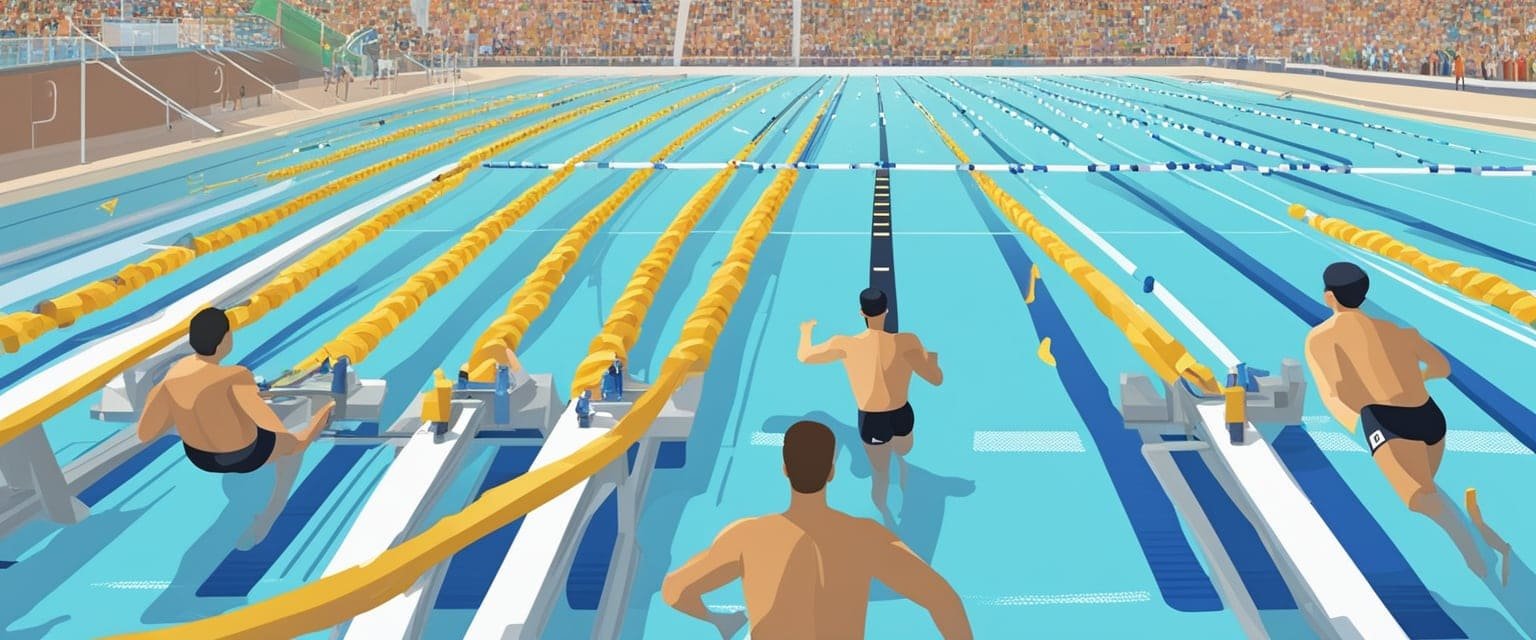
As we dive deeper into this topic, I’ll explore the venues where the world’s best swimmers showcase their skills and what it takes to prepare for such a monumental stage. Understanding what it means to represent your country and to witness the thrill of Olympic swimming can inspire anyone, whether you are an athlete, a fan, or simply curious about the sport.
Join me on this journey as we look beyond the competition and discover the stories and dedication behind Olympic swimming that make it a unique and inspiring event in the world of sports.
Key Takeaways
- Olympic swimming has evolved with new techniques and rules over the years.
- Athletes train rigorously to prepare for the Olympics, showcasing their dedication.
- Following Olympic swimming offers a glimpse into inspiring stories of competition and teamwork.
The Evolution of Olympic Swimming
Olympic swimming has come a long way since its inception, marked by significant changes in rules, technology, and athletic performance. I find it fascinating to explore how this sport has evolved over the years, shaped by remarkable athletes and historic events.
Diving Into History
The journey of Olympic swimming started in the first modern Olympic Games held in Athens in 1896. Back then, swimming events were only for men, featuring freestyle races. By 1900, the Paris Games introduced backstroke events, followed by breaststroke in 1904.
The butterfly stroke made its debut in the Melbourne Games in 1956. Since then, swimming has grown to include various events, such as individual medleys and team relays. Advances in technology, like better swimsuits and timing systems, have also transformed how athletes compete, leading to faster records and thrilling races. The excitement builds as we approach the next Olympic Games in Paris 2024.
Legendary Swimmers and Their Impact
Certain athletes have truly changed the landscape of Olympic swimming. Michael Phelps, for example, is a name that stands out. With 23 Olympic gold medals, he has set records that may never be broken. His incredible talent and dedication have inspired countless swimmers around the world.
Other legends include Mark Spitz and Katie Ledecky, whose achievements have also pushed the limits of the sport. Each generation of swimmers brings new techniques and training methods, continually raising the bar. Their stories highlight the passion and commitment involved in reaching Olympic-level success. These athletes not only make history but also inspire future swimmers to chase their dreams.
Understanding Olympic Swimming
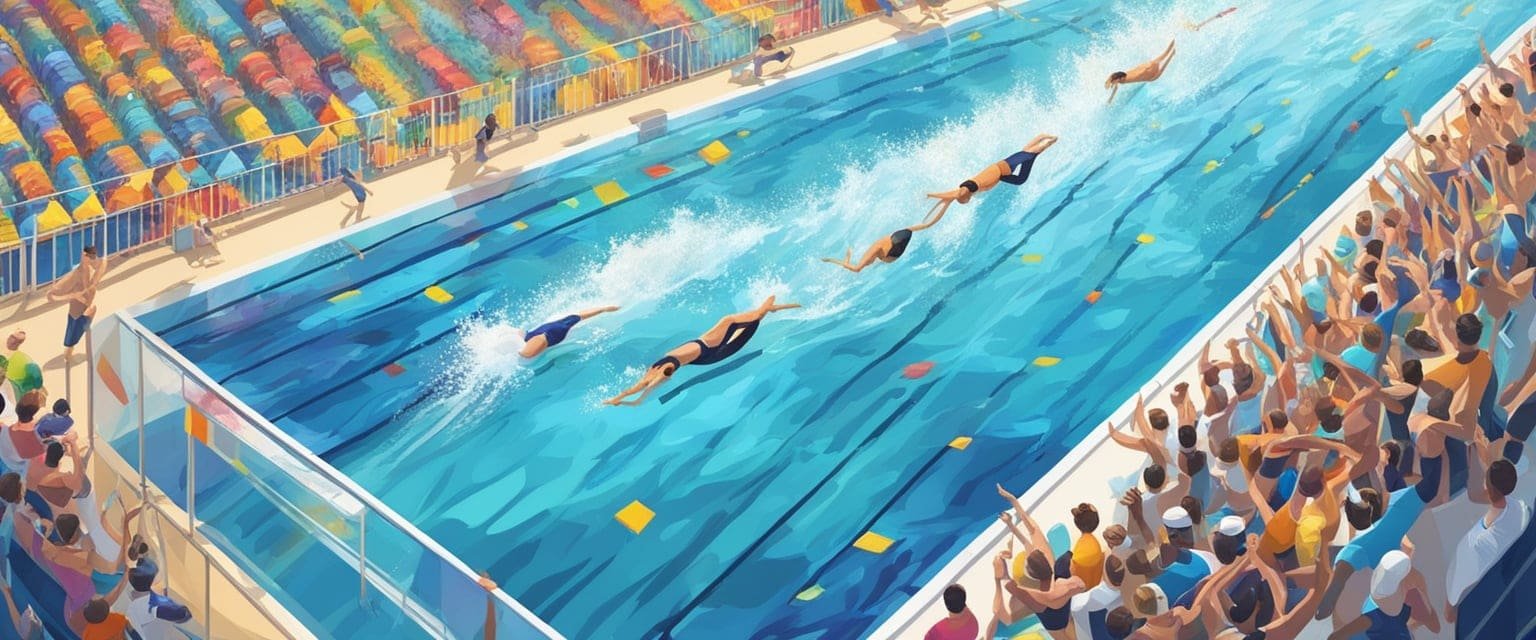
Olympic swimming features a variety of events, strokes, and distances that test athletes’ skills and endurance. I find it fascinating how each aspect contributes to the excitement of the Games.
Swimming Events Explained
In Olympic swimming, there are several key events, each designed to showcase different skills. The major events include individual races and team relays.
Individual events consist of four main strokes: freestyle, backstroke, breaststroke, and butterfly. Each stroke can also be part of the Individual Medley (IM), which combines all four. Relays allow teams to compete together, making them an exciting part of the competition.
Each event has specific rules and formats. For instance, the freestyle event is known for its speed, while the backstroke is unique because swimmers start in the water.
Classifying Strokes: From Freestyle to Medley
Swimmers use different strokes based on the event they’re competing in. Freestyle is often the fastest and most popular stroke. Many elite swimmers excel in this style, especially in sprints.
Backstroke requires swimmers to be on their back, which can be challenging but rewarding. The breaststroke is slower and requires precise timing and technique. Lastly, the butterfly is considered the most difficult stroke due to its unique arm movements.
The Individual Medley incorporates all four strokes in a set order. Swimmers must switch techniques seamlessly, showing versatility and skill. Each stroke has its own rhythm and demands focus.
Distances and Their Challenges
Olympic swimming events range from short sprints to longer endurance races. The shortest event is the 50m freestyle, which is just one lap. I find this quick race thrilling to watch as athletes compete for the fastest time.
Longer races, like the 1500m freestyle, cover 30 laps in the pool, testing swimmers’ stamina and strategy. Other common distances include the 100m, 200m, and 400m events, each offering unique challenges.
In relays, different distances can be combined, adding teamwork to the mix. Each swimmer strives to perform their best before passing the baton to the next teammate, creating a dynamic and exciting race situation.
The Rules and Regulations
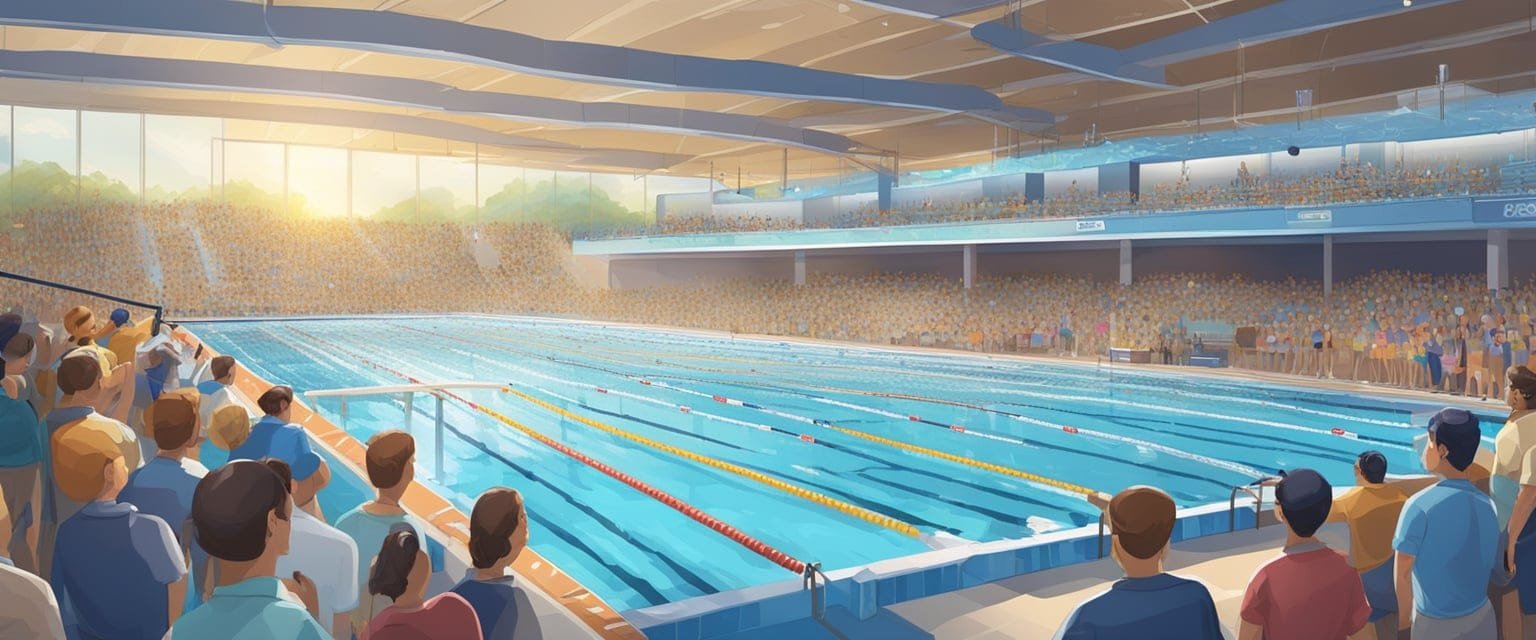
When it comes to Olympic swimming, understanding the rules and regulations is crucial for both competitors and fans. These guidelines help ensure fair competition and safety in the water.
False Starts and Disqualifications
A false start occurs when a swimmer jumps in before the starting signal. In Olympic swimming, if I false start, it can lead to disqualification. The officials use a starting block system to monitor races closely. Should a swimmer move too soon, a loud signal alerts everyone. If I happen to false start, it’s not just a warning; I can be disqualified from the race.
This rule is essential as it keeps the competition fair. The goal is to ensure that everyone begins at the same time and within the rules. This focus helps create a level playing field for all athletes.
Ties and Tie-Breaking Procedures
Ties can happen in swimming, especially in close races. If I finish a race at the same time as another swimmer, the result may be considered a tie. However, Olympic rules have a clear procedure for breaking these ties.
The use of touchpads is vital here. These pads record the exact finish times of swimmers. If there’s a tie in timing, the swimmer with the fastest qualifying time before the race is declared the winner. This ensures that overall performance counts, making every swim leading up to the event important.
The Importance of Turns and Finishes
Turns and finishes are key parts of any swim race. For every lap, I must touch the wall effectively to complete the turn. In freestyle and backstroke, I can use a somersault turn. In breaststroke and butterfly, I need to touch the wall with both hands.
Finishing is just as critical. The race only ends when I touch the wall with my hand, using a touchpad. In Olympic swimming, the timing is precise, and any mistake at the turn or finish can affect my final ranking. Proper technique in these areas can make or break a race.
Olympic Swimming Venues
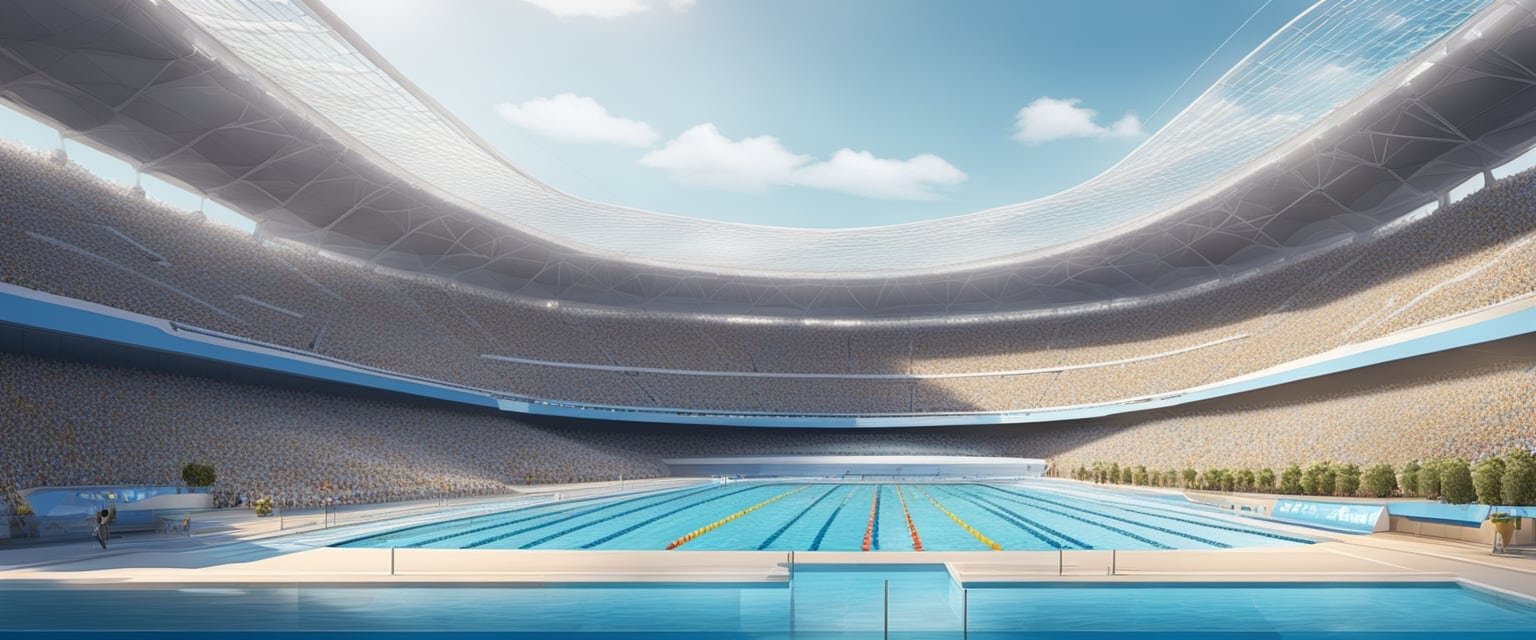
In this section, I will dive into the essential features of Olympic swimming pools and take a closer look at the Paris La Defense Arena, the venue for the swimming events at the upcoming Olympics.
Key Features of Olympic-Sized Pools
An Olympic-sized swimming pool has specific dimensions that set it apart from regular pools. It measures 50 meters in length, 25 meters in width, and has a minimum depth of 2 meters.
These pools are designed with 10 lanes to accommodate multiple swimmers simultaneously. The eight central lanes are typically used for races, while lanes zero and nine can be used to break ties.
Temperature control is crucial in these venues. Typically, the water temperature is maintained between 25-28 degrees Celsius to ensure the comfort and performance of the athletes. With these features, Olympic-sized pools provide an optimal environment for high-level competition.
A Peek at Paris La Defense Arena
The Paris La Defense Arena is set to host swimming at the 2024 Paris Olympics. This venue will feature a specially constructed Olympic-sized pool inside its spacious arena.
What makes this venue unique is that it is the first time it will host aquatic sports. The pool will hold about 660,000 gallons of water, providing ample space for swimmers.
To enhance the fan experience, only about half of the arena will be used during the events. This layout helps in creating a more intimate atmosphere, allowing fans to connect more with the swimmers. I can’t wait to see how this venue will come to life during the Games!
Preparation for the Big Stage
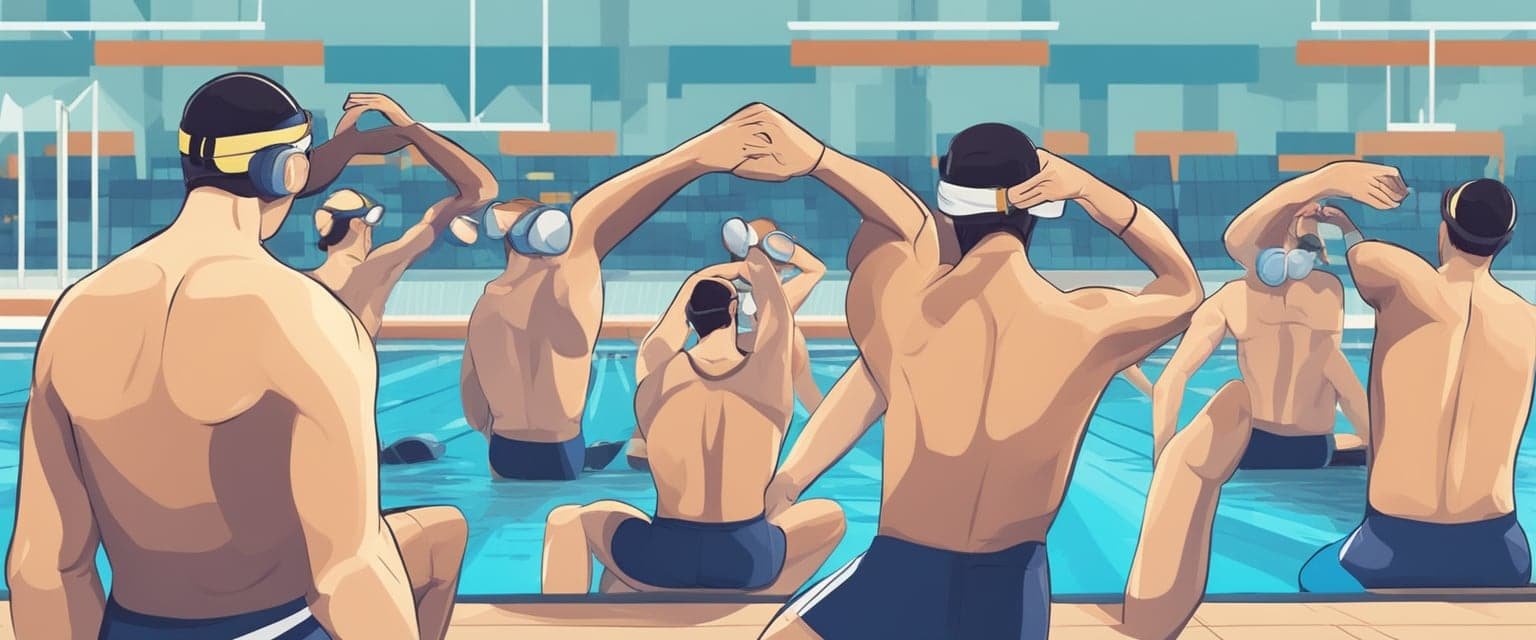
When preparing for big swimming competitions, it’s crucial to focus on effective training and the support from coaches and staff. These elements can make a significant difference in performance and confidence.
Training Regimens of Elite Swimmers
I believe that the training regime of elite swimmers is a mix of strength, endurance, and speed work. They often train for several hours a day, combining pool workouts and dryland exercises.
A typical week might look like this:
- Pool work: 5-6 days, focusing on technique and speed.
- Strength training: 3-4 sessions, using weights for overall strength.
- Endurance training: Long swims that build stamina.
Nutrition is also vital. A balanced diet supports training and recovery. Staying hydrated and getting enough sleep help me perform at my best.
The Role of Coaches and Support Staff
My coach plays an essential role in my swimming journey. They design personalized training plans tailored to my strengths and weaknesses. Regular feedback helps me improve quickly.
Support staff, like physiotherapists and nutritionists, contribute to my success as well. They ensure my body stays healthy and well-fueled.
Having a strong support team boosts my confidence before important meets. They provide motivation and help me stay focused. I know that with the right training and support, I can perform my best on the big stage.
The Olympic Journey
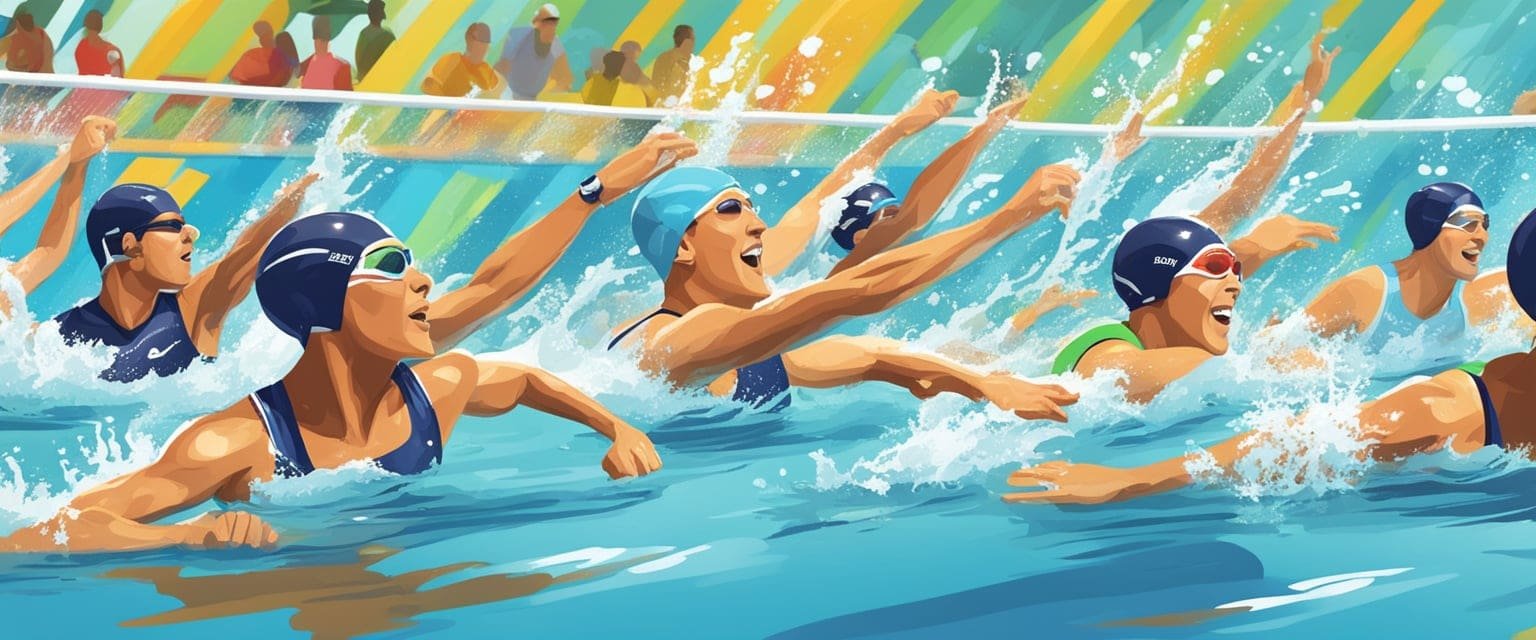
The pathway to Olympic swimming glory is an exciting experience filled with rigorous competition. From the initial heats to the thrill of the finals, every step matters in this journey.
Qualifying Rounds: Heats and Semifinals
In Olympic swimming, the competition begins with heats. Heats are preliminary races where swimmers compete to qualify for the next stage. Typically, multiple heats are held for each event, depending on the number of swimmers. Those who finish in the top positions advance to the semifinals.
Semifinals are crucial, as they determine who makes it to the final race. Here, the stakes are higher, and swimmers push themselves to achieve faster times. Only the best times qualify for the finals, where the real excitement begins.
The Thrill of the Finals and Medal Ceremonies
The finals are the moment every swimmer dreams of. In this race, the top competitors go head-to-head for Olympic medals. The atmosphere is electric, filled with anticipation from the audience and the athletes alike.
Winners receive medals: gold for first place, silver for second, and bronze for third. The medal ceremonies are memorable, showcasing the athletes’ achievements. Athletes stand proudly on the podium as their national anthems play. This moment signifies the culmination of years of hard work and dedication, marking a milestone in their Olympic journey.
Representing the World

In the world of Olympic swimming, certain countries stand out for their exceptional talent and achievements. Two of the most recognized are the United States and Australia. These nations have produced some of the best swimmers while also nurturing remarkable athletes from other countries.
Swimming Superpowers: United States and Australia
When I think of Olympic swimming, Team USA immediately comes to mind. The United States has a rich history of winning medals and setting records. Legendary swimmers like Michael Phelps and Katie Ledecky have showcased extraordinary skills, bringing home countless gold medals.
Australia also shines brightly in this arena. Swimmers like Ariarne Titmus and Kaylee McKeown have made a name for themselves on the world stage. The fierce competition between the U.S. and Australia often leads to thrilling races, captivating audiences everywhere.
Noteworthy Competitors From Around the Globe
I’m always impressed by the talent that emerges from various countries. For instance, Kate Douglas, an American swimmer, is quickly becoming a force to reckon with in the pool. Competitors from Great Britain, like Adam Peaty, have also set remarkable records, particularly in breaststroke events.
In addition, countries like Japan and South Africa are producing elite swimmers. These athletes often surprise audiences with their incredible times and technical skills. As swimming continues to evolve, I look forward to seeing how these talented competitors represent their nations on the world stage.
Following the Event

Staying updated on the Olympic swimming events is essential for fans and supporters. I’ll share how to keep track of the schedule and the best ways to check live results.
How to Keep Up with the Schedule
I find the official Olympic swimming schedule very useful. It lists all the events, including heats and finals, so I know when to tune in. The swimming events start on July 27 and run until August 4.
Typically, morning heats kick off at 5 a.m. ET, while finals occur in the afternoon starting at 2 p.m. ET. I always mark my calendar for key races, especially finals where medals are awarded. Using time zone converters helps me catch the events live.
Official Apps and Live Results
I love using the Olympics’ official app for real-time updates. The app provides live streaming, and I can see results as they happen. It also features a notification option for when my favorite events are about to start.
For quick access to recorded times, I check dedicated swimming websites that track performance and medal tallies. Following social media channels keeps me in the loop with athlete updates and highlights. This way, I never miss a moment of the action!
Olympic Swimming Beyond the Competition
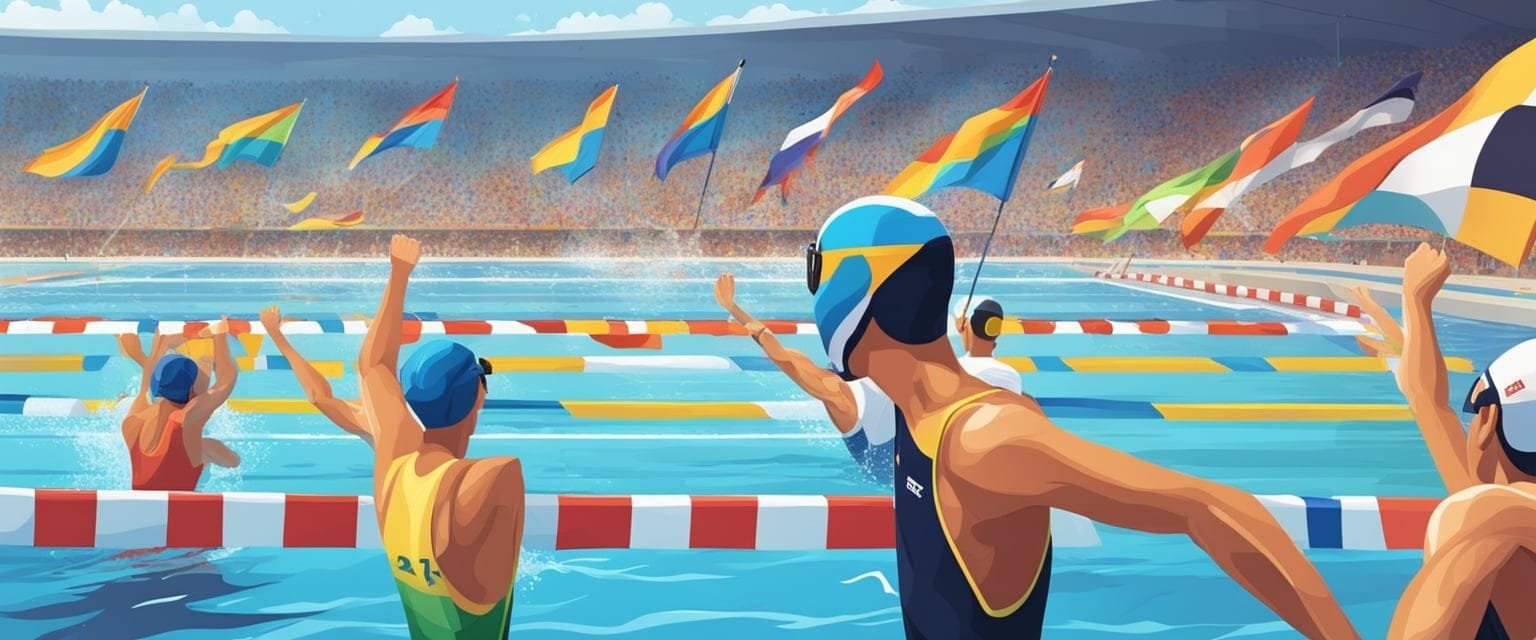
Olympic swimming is much more than just a competitive sport. It offers numerous benefits for health and recreation while also playing a key role in culture and society. Here are some aspects that show the impact of swimming beyond the pool.
Swimming for Health and Recreation
I have always admired swimming for its health benefits. It’s a fantastic workout that engages almost every muscle in the body. Swimming helps improve cardiovascular fitness, increases muscle strength, and enhances flexibility. All these factors contribute to a healthier lifestyle.
Joining a local swim team or taking swimming classes can be a great way to stay active. Many people swim for fun and relaxation. It can reduce stress and improve mental well-being. I find that swimming in open water also connects me with nature, providing an enjoyable escape.
The Cultural Significance of Olympic Swimming
Olympic swimming carries deep cultural importance. It brings people together, showcasing diverse talents from around the world. The excitement of watching athletes compete inspires countless individuals to swim for both fitness and leisure.
Countries often take pride in their swimmers, creating a strong sense of national identity. When a swimmer wins a medal, it unites fans and fosters community spirit. I think this shared experience of cheering on athletes adds to the richness of cultural events related to swimming.
In many cultures, swimming is also a rite of passage. Learning to swim can signify growing up or gaining independence. Overall, the impact of Olympic swimming goes beyond the medals, enriching lives and communities around the globe.
